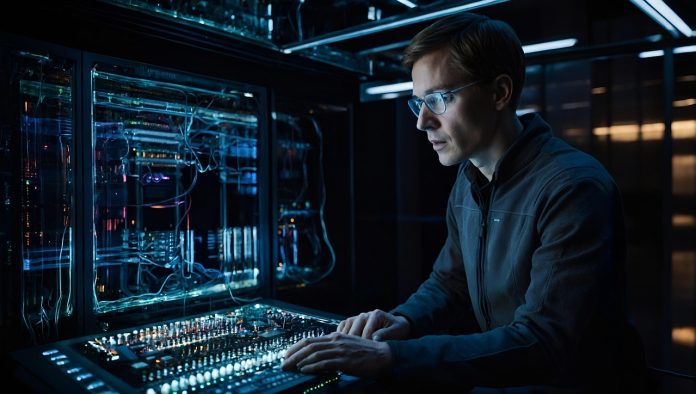Learn why AI in cybersecurity is the next frontier in the protection of critical infrastructure in this post.
In December 2015, Ukraine suffered a major power outage after hackers used malware to infiltrate its power grids, leaving hundreds of thousands without electricity in the middle of winter.
A forensic analysis by the International Society of Automation (ISA) later revealed that networks and systems had likely been compromised as early as eight months before the blackout, showing that it was a carefully planned intrusion rather than a spontaneous strike.
The attack demonstrated that cyber threats are no longer limited to phishing scams or stolen data. Instead, it exposed how these threats can directly disrupt essential services and endanger the systems societies rely on every day.
To prevent future attacks and avoid greater losses, critical infrastructure must develop more credible, proactive cybersecurity. As Ukraine’s outage demonstrates, defences can no longer be purely reactive; they must be capable of anticipating threats and responding in real time.
Artificial intelligence (AI) provides that capability, enabling defenders to analyse vast amounts of data, uncover hidden patterns, and adapt to evolving attacks. In this article, we will look further into why AI in cybersecurity plays a defining role in the future of critical infrastructure protection.
Table of Contents
Why AI in Cybersecurity Is the Next Frontier in the Protection of Critical Infrastructure?
1. Smarter Monitoring in Operational Technology (OT) Environments
Operational technology systems form the backbone of critical infrastructure. They control physical processes such as electricity distribution, water flow, and train signalling. Because of their direct connection to real-world outcomes, even small disruptions can have far-reaching effects. AI-powered monitoring enhances defences by identifying threats and unusual behaviours in real time, giving operators greater visibility into their systems.
Consider a power grid where energy usage suddenly spikes in one sector. On its own, this might appear as normal demand. With AI, however, the system can compare this pattern against thousands of past scenarios and recognise it as a potential sign of intrusion. That early warning allows operators to take corrective action before the disruption spreads and causes blackouts.
2. Simulating Threats Safely with Digital Twins
A digital twin is a virtual copy of a physical system that mimics its operations in real time. In cybersecurity, digital twins of supervisory control and data acquisition (SCADA) systems are valuable because they allow organisations to test defences in a safe environment. With AI applied to these digital replicas, it becomes possible to spot subtle anomalies without putting live systems at risk.
Beyond detection, digital twins are also effective for running simulations that prepare operators for real-world threats. For example, a drill might simulate a cyberattack in which intruders attempt to alter chemical levels in a water treatment facility. Testing this scenario on the digital twin lets operators observe how the system reacts and practice coordinated responses, enabling them to address weak points before an actual attack occurs.
3. Improving Threat Detection Through Adaptive Learning
One of AI’s greatest advantages is its ability to learn and improve over time. Machine learning models can analyse past incidents and incorporate operator feedback, gradually enhancing their ability to recognise threats. This process also helps reduce false positives, a longstanding challenge in critical infrastructure security.
For instance, if a hospital’s system experienced a ransomware attempt, the AI could adapt to identify similar attack patterns more quickly in the future. Over time, this leads to faster, more accurate detection, ensuring that frontline staff can trust the alerts they receive and focus their attention where it matters most.
4. Turning Data into Stronger Incident Response
Critical infrastructure generates enormous amounts of data from sensors, networks, and connected devices. On their own, human operators cannot process this volume of data effectively. AI can bring these streams together and correlate the information, providing decision-makers with a clearer view of what is happening across the system.
In transportation, for example, AI could connect data from traffic sensors, signalling systems, and surveillance cameras. If it detects a coordinated attempt to disrupt rail operations, it can recommend precise steps to contain the issue.
5. Automating Routine Security Tasks to Focus on Critical Decisions
Cybersecurity teams in critical sectors often face staff shortages and overwhelming workloads. AI can assist by automating repetitive tasks such as log analysis and vulnerability scans. Offloading these time-consuming activities to AI also enables human defenders to concentrate on higher-level strategy and decision-making.
Imagine, for instance, an energy control centre where thousands of alerts may arrive daily. AI can filter out false alarms and prioritise the most likely threats, escalating only the most urgent cases. This reduces operator fatigue and ensures faster responses to real incidents, ultimately enhancing the overall resilience and productivity.
6. Keeping Pace with Sophisticated Threats
Threat actors are developing more advanced techniques, often using AI tools of their own to identify vulnerabilities and launch attacks. As such, traditional defences that rely on static rules are no longer sufficient. AI helps critical infrastructure keep pace by continuously adapting and predicting new tactics.
This capability is especially important as more devices are connected through the Industrial Internet of Things (IIoT), which links sensors, machinery, and control systems to improve efficiency and automation. While this connectivity offers many benefits, each added device also expands the attack surface. AI’s ability to monitor these connections and respond to unusual activity in real time ensures that defenders remain a step ahead of adversaries.
Algorithms on the Front Line of Infrastructure Security
Critical infrastructure can no longer rely on outdated, reactive defences in the face of increasingly sophisticated cyberattacks.
The points above highlight just some of the ways AI in cybersecurity helps operators anticipate threats, strengthen defences, and safeguard the essential systems that support daily life.
As these technologies continue to evolve, AI will remain at the forefront of protecting the critical infrastructure that society relies on.
INTERESTING POSTS
- The Legalities Of Crypto: A Global Perspective
- What Is A Common Indicator Of A Phishing Attempt?
- 4 Ways To Improve The IT Infrastructure In Your Company
- Projecting Future Solar Energy Requirements: A Journey into Sustainable Power
- The Intersection of AI and Privacy: Safeguarding Personal Information in the Age of Intelligent Systems
- The Benefits and Challenges of Implementing Digital Twins in Supply Chain Management
About the Author:
Gina Lynch is a VPN expert and online privacy advocate who stands for the right to online freedom. She is highly knowledgeable in the field of cybersecurity, with years of experience in researching and writing about the topic. Gina is a strong advocate of digital privacy and strives to educate the public on the importance of keeping their data secure and private. She has become a trusted expert in the field and continues to share her knowledge and advice to help others protect their online identities.









